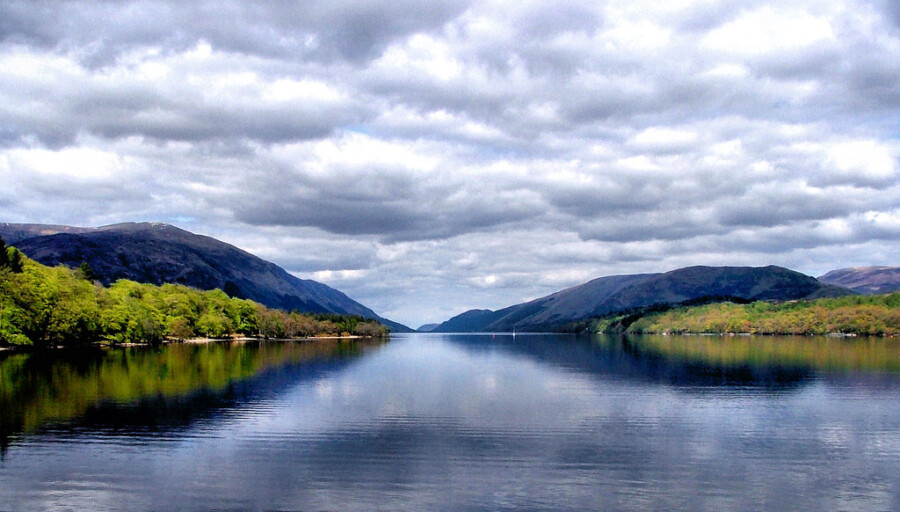

Benny Higgins, Chairman of Media House International client Buccleuch and Chair of the Advisory Group on Economic Recovery, has today authored a joint opinion article in The Herald with Francesca Osowska, CEO of Scottish Natural Heritage.
The article examines the concept of natural capital in the economic recovery from the COVID-19 pandemic. With Scotland setting a net-zero carbon target for the year 2045, natural capital is a term that will gain prominence in future years. Please read on for more detail in Benny and Francesca’s article.
AMID the COVID-19 pandemic, there was a message of hope last week for those working towards a greener Scotland.
In responding to recommendations by the Advisory Group on Economic Recovery (AGER), the Scottish Government highlighted the importance of our natural environment to the green recovery and signalled the benefits of thinking in terms of natural capital as we chart our journey to a greener Scotland.
There is consensus that green priorities should be a cornerstone of Scotland’s recovery from the pandemic.
Maximising the potential of the environment to support the green recovery means investing in Scotland’s natural capital. By doing so, we have a better chance of hitting Scotland’s world-leading 2045 net-zero carbon targets.
Also, ecological diversity in Scotland is not where it was many decades ago, so investment can help us towards a nature-rich future. And the need to build resilience for what the future might sling at us has been shown to be particularly important in the past few months.
So, natural capital is a concept whose time has come but, to ordinary Scots, what does that mean and what are the benefits?
For those unfamiliar with the term, natural capital comprises the habitats and ecosystems that provide social, economic and environmental benefits. Natural capital is crucial to human wellbeing and the economy by showing nature as an asset, mostly freely available that benefits people, business and our environment.
One obvious example, which many of us will be able to relate to, has been how we are valuing the natural world around us as we live through the COVID-19 pandemic. The benefits to our personal wellbeing – physical and mental – of making space for nature in our lives have been important to many Scots and their families.
Accountancy modelling shows that Scotland’s natural capital is a significant asset from which we all benefit
There’s a long, diverse and potentially growing list of these natural resources, many of which nature provides for free: agricultural biomass; fish capture; timber; water abstraction; mineral production; oil and gas production; renewable energy generation; carbon sequestration; air pollutant removal; recreation; urban cooling; noise mitigation and supporting house prices.
Natural capital accounting is an emerging economic discipline. Despite its relative infancy, its modelling shows that Scotland’s natural capital is a significant asset from which we all benefit.
The Office for National Statistics (ONS) ran the numbers on this list. Reporting in March this year, the ONS published Scottish Natural Capital Accounts, valuing Scotland’s natural capital at £196billion.
A report for Scottish Natural Heritage in 2008 estimated that natural capital supports 240,000 jobs in Scotland, a similar finding to a report recently commissioned by Scotland’s Rural College (220,000 jobs).
The parts of the economy dependent on this natural capital – including food & drink and tourism – have grown by 25% between 2008 and 2018, though of course face strong headwinds as we emerge from the lockdown. Investment in natural capital can increase jobs and economic impact, supporting a faster, fairer and greener recovery.
A partnership between the public sector and business is essential and speaking the language of natural capital could well be the way to forge a crucial alliance.
By placing a monetary value on natural capital, we can put a price – and cost – on our economic actions. In turn, we can better promote sustainable practice that provides both commercial return and public benefits into the future.
That partnership is so important because to help slow global warming and reverse biodiversity decline in Scotland, major investment is needed. This will be a blend of public and private money.

Not all of this will be invested directly into the environment but much of it will be made possible by the natural world – consider, for example, the benefits of the wind or sun to renewable energy or the beauty of many of our natural landscapes to tourism.
On our land, we anticipate growing investment in peatland restoration, woodland planting and agri-environment schemes. As a result, there is a growing demand for green finance, part of a wider environmental and social governance that demands capabilities to monitor, report and verify natural capital baselines and credible measurement of enhancements.
Those proactive in current agri-environment schemes should see natural capital as an opportunity for new enhanced revenue.
The often challenging nature of farming economics can be offset by the value of environmental services that attract limited financial support.
Yet when viewed through the lens of natural capital, the commercial potential of the environment could be much more significant and can include capturing the value of carbon; enhancing biodiversity; water services; and tourism and access.
So, investments in nature – big and small – can make a big difference to our health, prosperity and a greener Scotland.
To plan and invest with nature in mind, we drive transformation and free our natural capital to thrive for the benefit of all us. Especially important as we continue our green recovery.